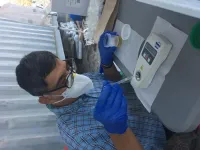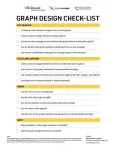(Press-News.org) OAK BROOK, Ill. – Researchers have developed a new, interpretable artificial intelligence (AI) model to predict 5-year breast cancer risk from mammograms, according to a new study published today in Radiology, a journal of the Radiological Society of North America (RSNA).
One in 8 women, or approximately 13% of the female population in the U.S., will develop invasive breast cancer in their lifetime and 1 in 39 women (3%) will die from the disease, according to the American Cancer Society. Breast cancer screening with mammography, for many women, is the best way to find breast cancer early when treatment is most effective. Having regularly scheduled mammograms can significantly lower the risk of dying from breast cancer. However, it remains unclear how to precisely predict which women will develop breast cancer through screening alone.
Mirai, a state-of-the-art, deep learning-based algorithm, has demonstrated proficiency as a tool to help predict breast cancer but, because little is known about its reasoning process, the algorithm has the potential for overreliance by radiologists and incorrect diagnoses.
“Mirai is a black box—a very large and complex neural network, similar in construction to ChatGPT—and no one knew how it made its decisions,” said the study’s lead author, Jon Donnelly, B.S., a Ph.D. student in the Department of Computer Science at Duke University in Durham, North Carolina. “We developed an interpretable AI method that allows us to predict breast cancer from mammograms 1 to 5 years in advance. AsymMirai is much simpler and much easier to understand than Mirai.”
For the study, Donnelly and colleagues in the Department of Computer Science and Department of Radiology compared their newly developed mammography-based deep learning model called AsymMirai to Mirai’s 1- to 5-year breast cancer risk predictions. AsymMirai was built on the “front end” deep learning portion of Mirai, while replacing the rest of that complicated method with an interpretable module: local bilateral dissimilarity, which looks at tissue differences between the left and right breasts.
“Previously, differences between the left and right breast tissue were used only to help detect cancer, not to predict it in advance,” Donnelly said. “We discovered that Mirai uses comparisons between the left and right sides, which is how we were able to design a substantially simpler network that also performs comparisons between the sides.”
For the study, the researchers compared 210,067 mammograms from 81,824 patients in the EMory BrEast imaging Dataset (EMBED) from January 2013 to December 2020 using both Mirai and AsymMirai models. The researchers found that their simplified deep learning model performed almost as well as the state-of-the-art Mirai for 1- to 5-year breast cancer risk prediction.
The results also supported the clinical importance of breast asymmetry and, as a result, highlights the potential of bilateral dissimilarity as a future imaging marker for breast cancer risk.
Since the reasoning behind AsymMirai’s predictions is easy to understand, it could be a valuable adjunct to human radiologists in breast cancer diagnoses and risk prediction, Donnelly said.
“We can, with surprisingly high accuracy, predict whether a woman will develop cancer in the next 1 to 5 years based solely on localized differences between her left and right breast tissue,” he said. “This could have public impact because it could, in the not-too-distant future, affect how often women receive mammograms.”
###
“AsymMirai: Interpretable Mammography-based Deep Learning Model for 1–5-year Breast Cancer Risk Prediction.” Collaborating with Jon Donnelly were Luke Moffett, M.S., Alina Jade Barnett, M.S., Ph.D., Hari Trivedi, M.D., Fides Schwartz, M.D., Joseph Lo, Ph.D., and Cynthia Rudin, Ph.D.
Radiology is edited by Linda Moy, M.D., New York University, New York, N.Y., and owned and published by the Radiological Society of North America, Inc. (https://pubs.rsna.org/journal/radiology)
RSNA is an association of radiologists, radiation oncologists, medical physicists and related scientists promoting excellence in patient care and health care delivery through education, research and technologic innovation. The Society is based in Oak Brook, Illinois. (RSNA.org)
For patient-friendly information on breast imaging, visit RadiologyInfo.org.
END
Social activities such as interactions with others and participation in organised events can prevent cognitive decline in long-term care facility. Research from Amsterdam UMC, carried out among 3600 patients in 42 Dutch and Belgian care homes, shows that participation in social activities offers a protective effect for those with no, or little, cognitive impairment. These results are published today in the Journal of Alzheimer's Disease.
"Cognitive decline in long-term care residents is relatively common, a Canadian study showed that almost a quarter of residents cognitively declined after a year of residency," ...
(Boston)—Coping is defined as cognitive and behavioral efforts to manage stressors that people believe exceed their ability and resources to respond to effectively. While previous research has linked stressor characteristics, such as the type of event and its duration, and how stressed people feel in response to them, to higher mortality risk, far fewer studies have considered the long-term health consequences of how we manage stressors (coping) in large-scale studies.
In a new study from ...
(WASHINGTON, March 19, 2024) – Magnetic resonance imaging (MRI) and lumbar puncture (LP) may not always be necessary for diagnosing and managing a serious neurological complication associated with CAR T-cell therapy, according to a new Blood Advances study. Findings further validated the use of the electroencephalogram (EEG) – a noninvasive test measuring electrical activity in the brain – in managing this neurotoxicity.
“When treating patients for CAR T-cell associated toxicities, we typically follow pretty ...
Most of the white blood cells in your body are a type of cell called neutrophils. Despite their high numbers, they are less well understood than other immune cells, in part because they have very short lifespans: an average neutrophil lives for only eight hours. However, recent work has shown that neutrophils are very flexible cells, capable of dialing inflammation up or down, especially in the context of cancer. This makes them attractive targets for immunotherapy, which aims to tweak the immune system to more potently attack disease. But neutrophil-based ...
Nearly all farm workers who participated in a recent study in Florida were dehydrated at the end of their shifts, and more than half were still dehydrated the following morning.
The study, a partnership between the University of Illinois Chicago and the Farmworker Association of Florida, used urine samples collected first thing in the morning, at lunch and at the end of a shift to assess the risk of dehydration over five days in May 2021 and May 2022 at a vegetable farm in southern Florida. A total of 111 workers, most of them men from Mexico and Guatemala, participated in the study, which is published in the journal ...
When the “hockey stick” graph, which illustrated a steep increase in global temperatures, was published in 1998, it reshaped the world’s understanding of climate change. A quarter-century later, with climate change now wreaking havoc around the world, graphics depicting global warming are more important than ever to inform policymaking.
However, a recent USC-led study reveals that some graphics developed for reports by the Intergovernmental Panel on Climate Change (IPCC) are too complex, even for the intended audiences of policymakers and practitioners.
Researchers recommend limiting each graphic, which the IPCC refers to as “figures,” ...
Waltham — March 18, 2024 — Numbers of craniofacial injuries related to exercise and weightlifting have increased sharply over the past decade, reports a study in The Journal of Craniofacial Surgery. The journal is published in the Lippincott portfolio by Wolters Kluwer.
"Incidence of craniofacial injury significantly increased between 2013 and 2022, illuminating the need for better education and risk mitigation strategies," according to the new research by Rohan Mangal, MSc, and colleagues of University of Miami. Rates of exercise-related head and facial injuries appear higher for men than women, and ...
Korea Electrotechnology Research Institute (KERI) has reached a significant milestone with the publication of a groundbreaking study in a globally esteemed journal, marking a crucial stride toward the commercialization of all-solid-state batteries, free from the inherent risks of explosion and fire.
Dr. Park Jun-woo of the KERI Next-Generation Battery Research Center and Sung Junghwan (student researcher at the UST KERI Campus) have successfully engineered a revolutionary technology. This technology, focused on the "size-controlled ...
Monitoring levels of DNA shed by tumors and circulating in the bloodstream could help doctors accurately assess how gastroesophageal cancers are responding to treatment, and potentially predict future prognosis, suggests a new study led by researchers at the Johns Hopkins Kimmel Cancer Center and its Bloomberg~Kimmel Institute for Cancer Immunotherapy.
The study tracked minimal residual disease (the amount of cancer left following treatment) by analyzing circulating tumor DNA (ctDNA), showing how these ...
Neuroblastoma is a heterogeneous solid tumor that originates extracranially from neuroblasts. Previous research has demonstrated that miR-492 polymorphisms can contribute to cancer susceptibility. However, their specific involvement in susceptibility to neuroblastoma has yet to be fully clarified.
Background and objectives
Neuroblastoma is a heterogeneous solid tumor that originates extracranially from neuroblasts. Previous research has demonstrated that miR-492 polymorphisms can contribute to cancer susceptibility. However, their specific involvement in susceptibility to neuroblastoma has yet to be fully clarified.
In this study, we focused on miRNA-492, which has been reported to ...



